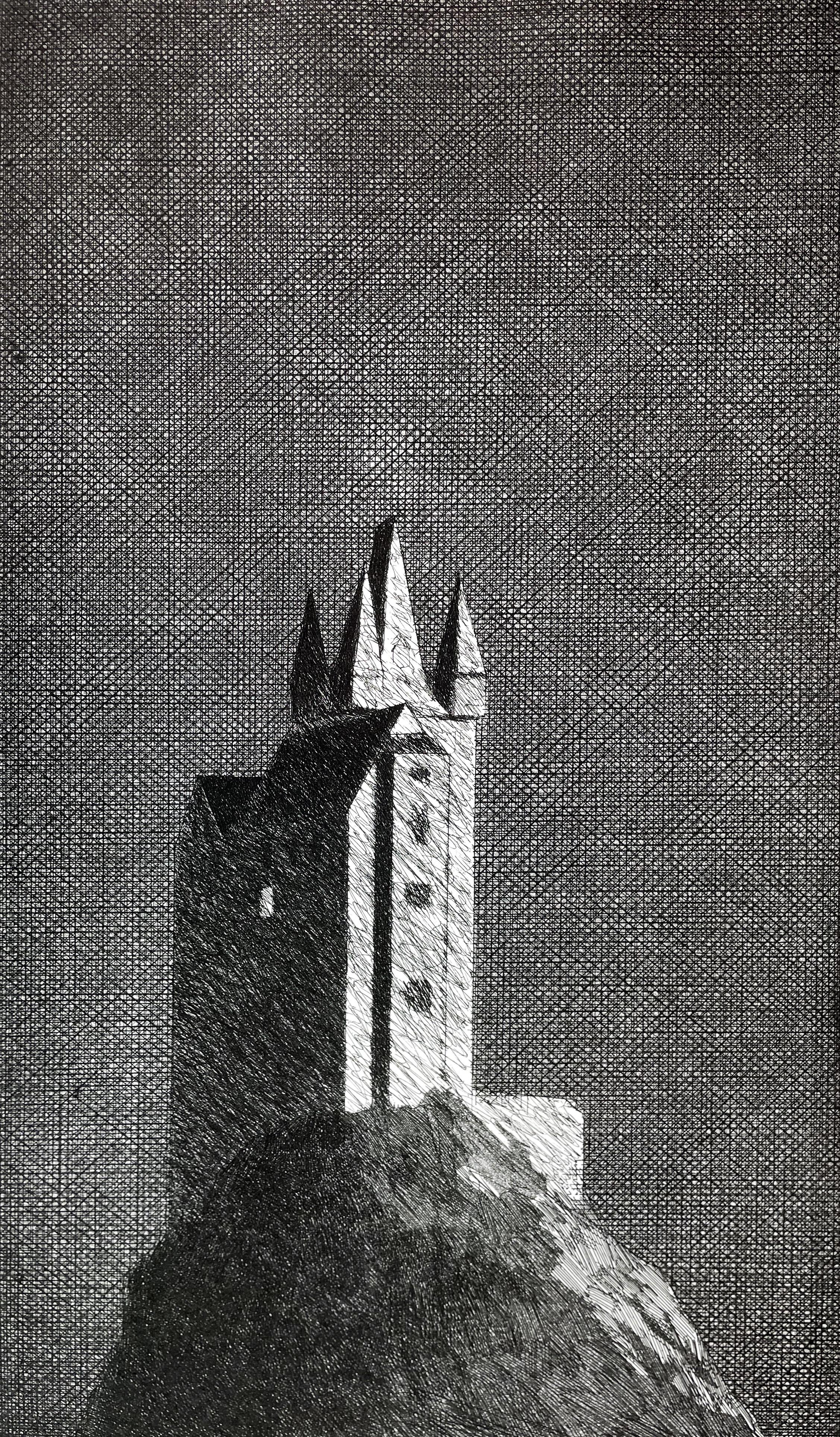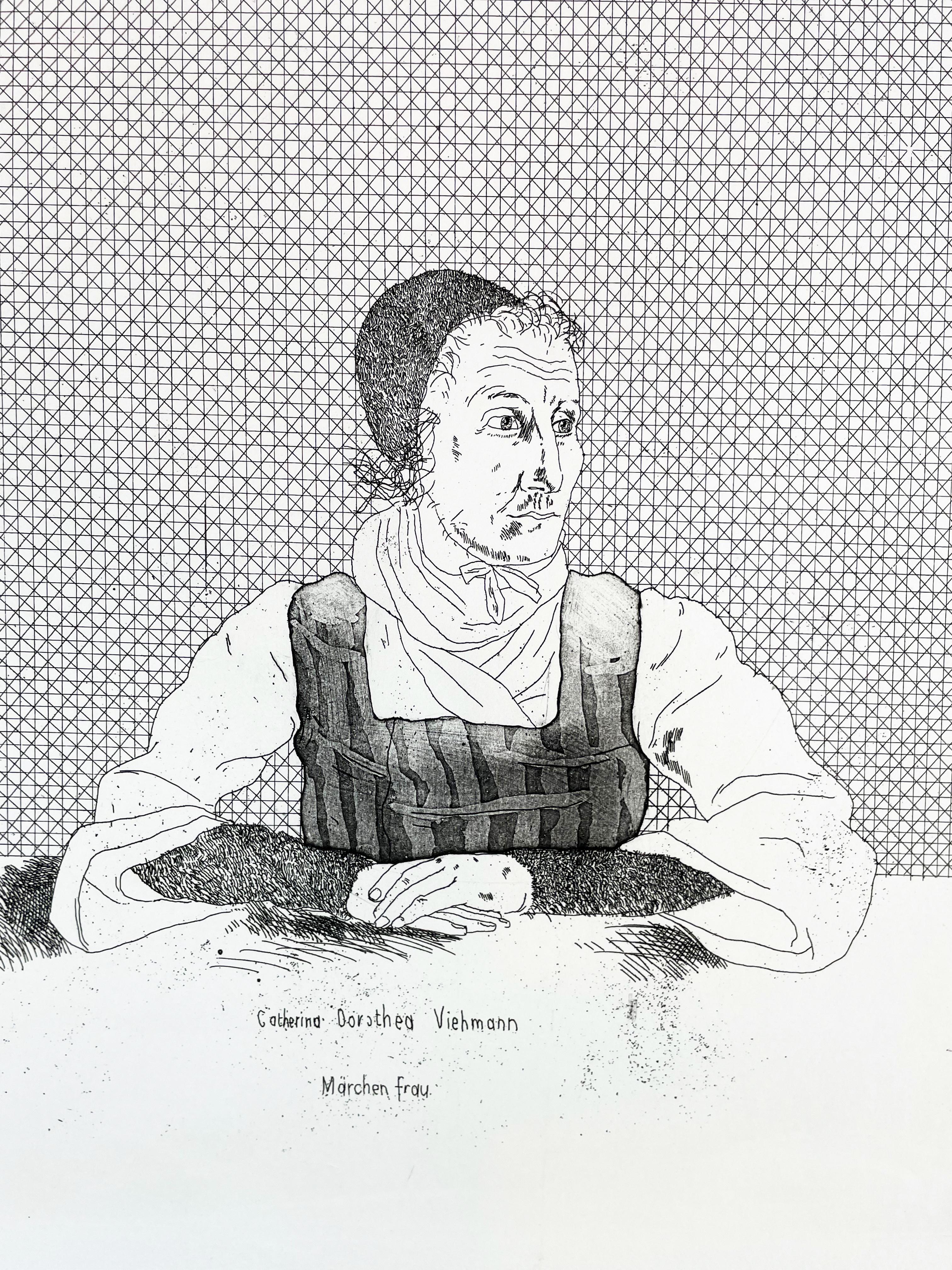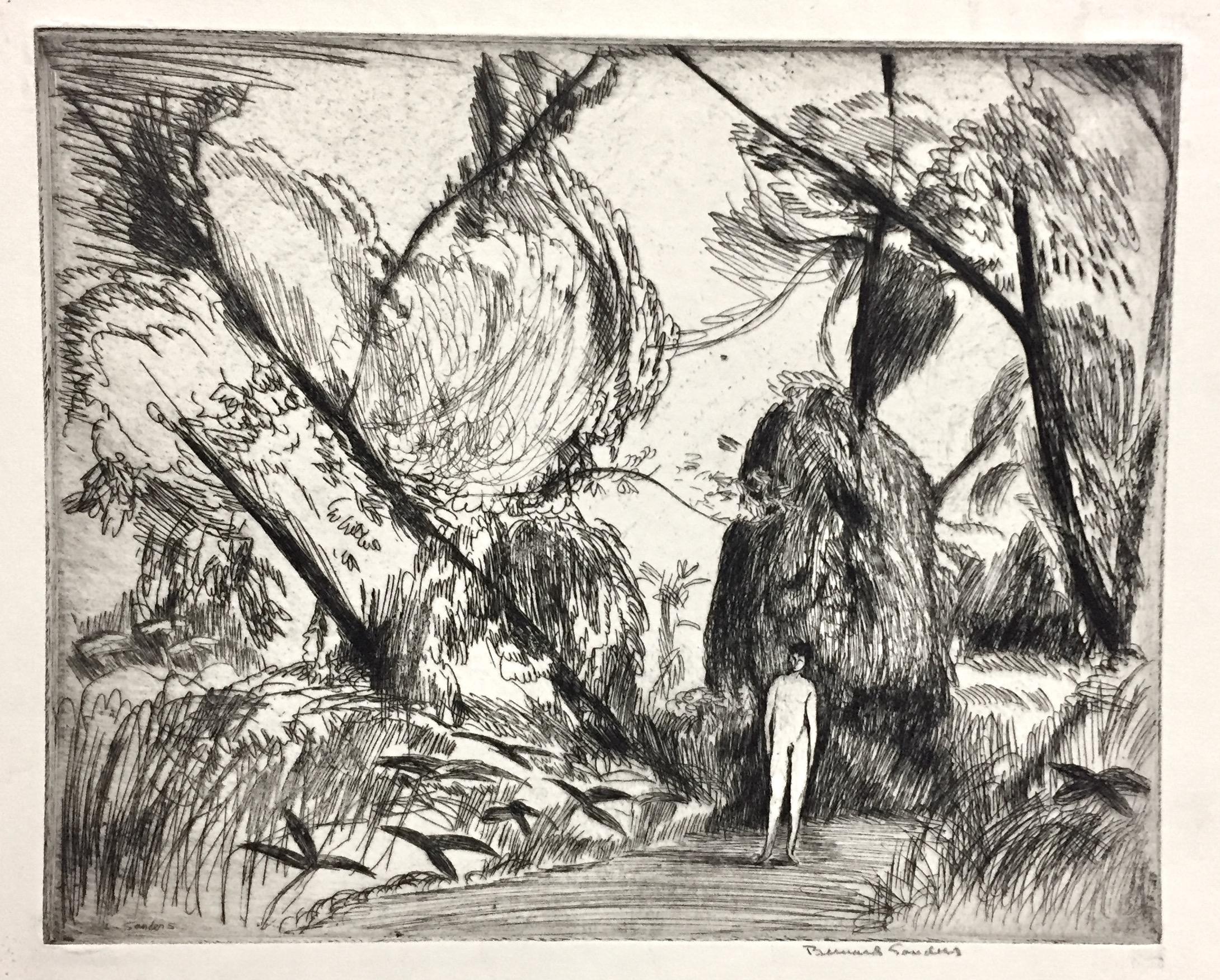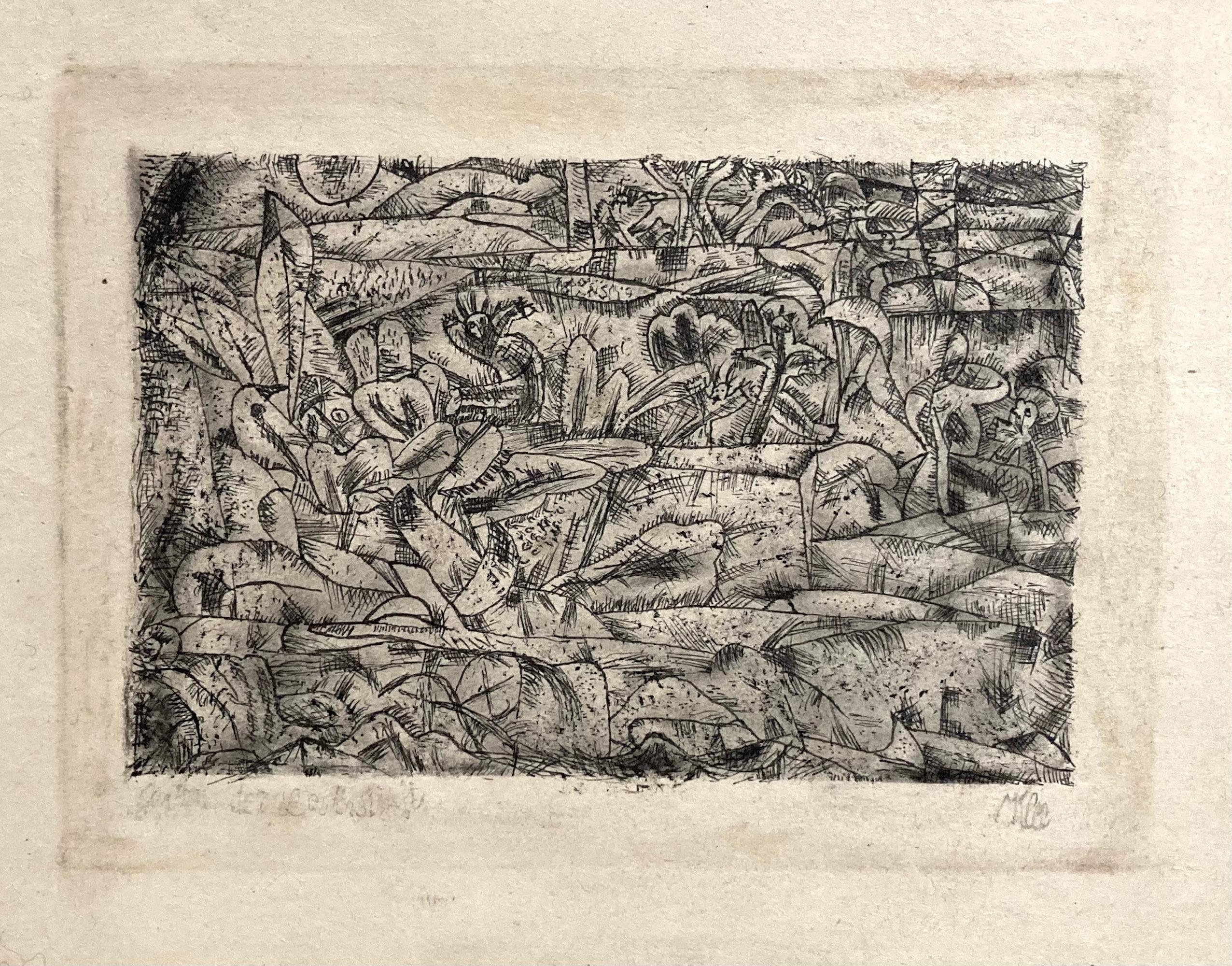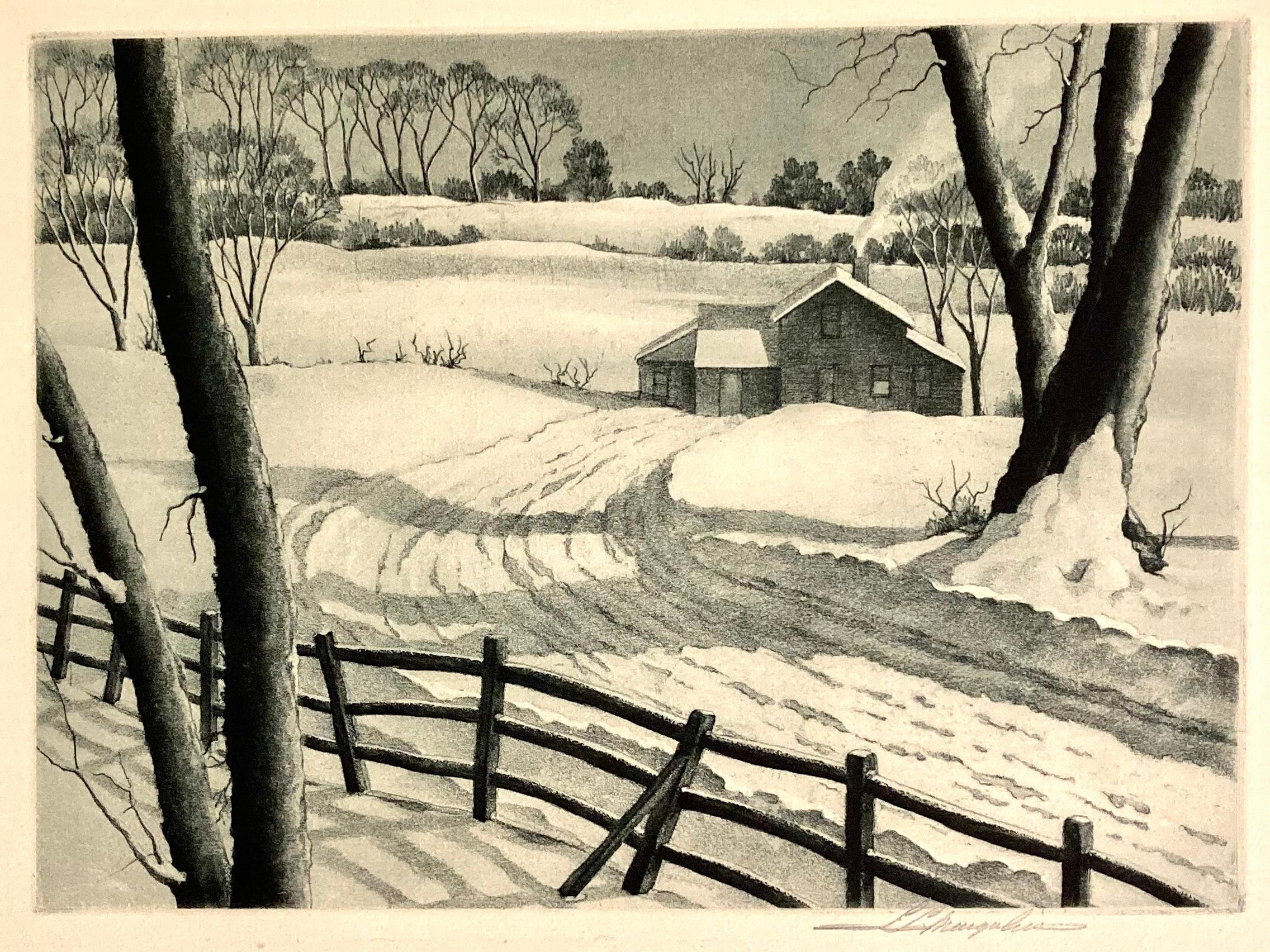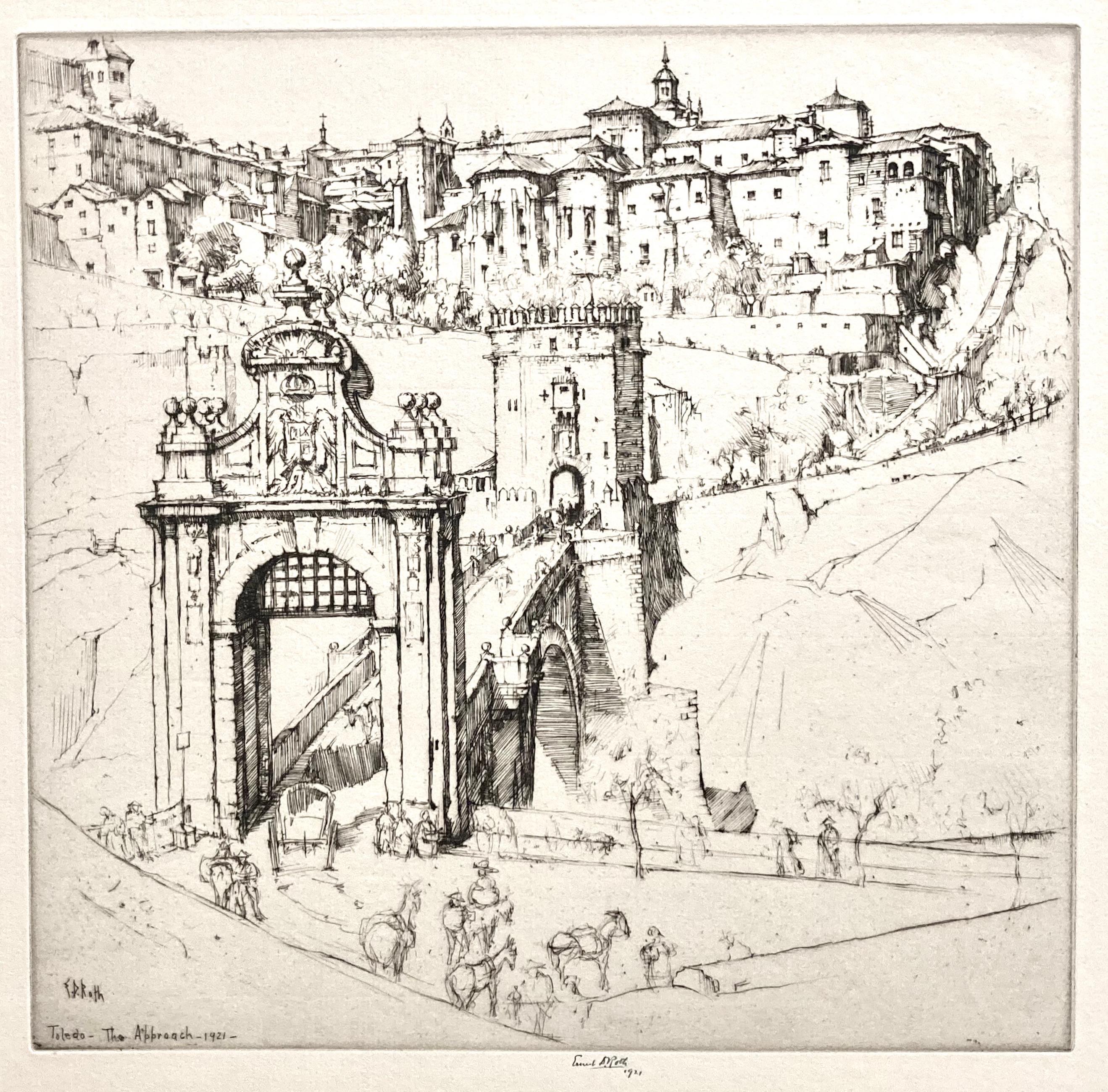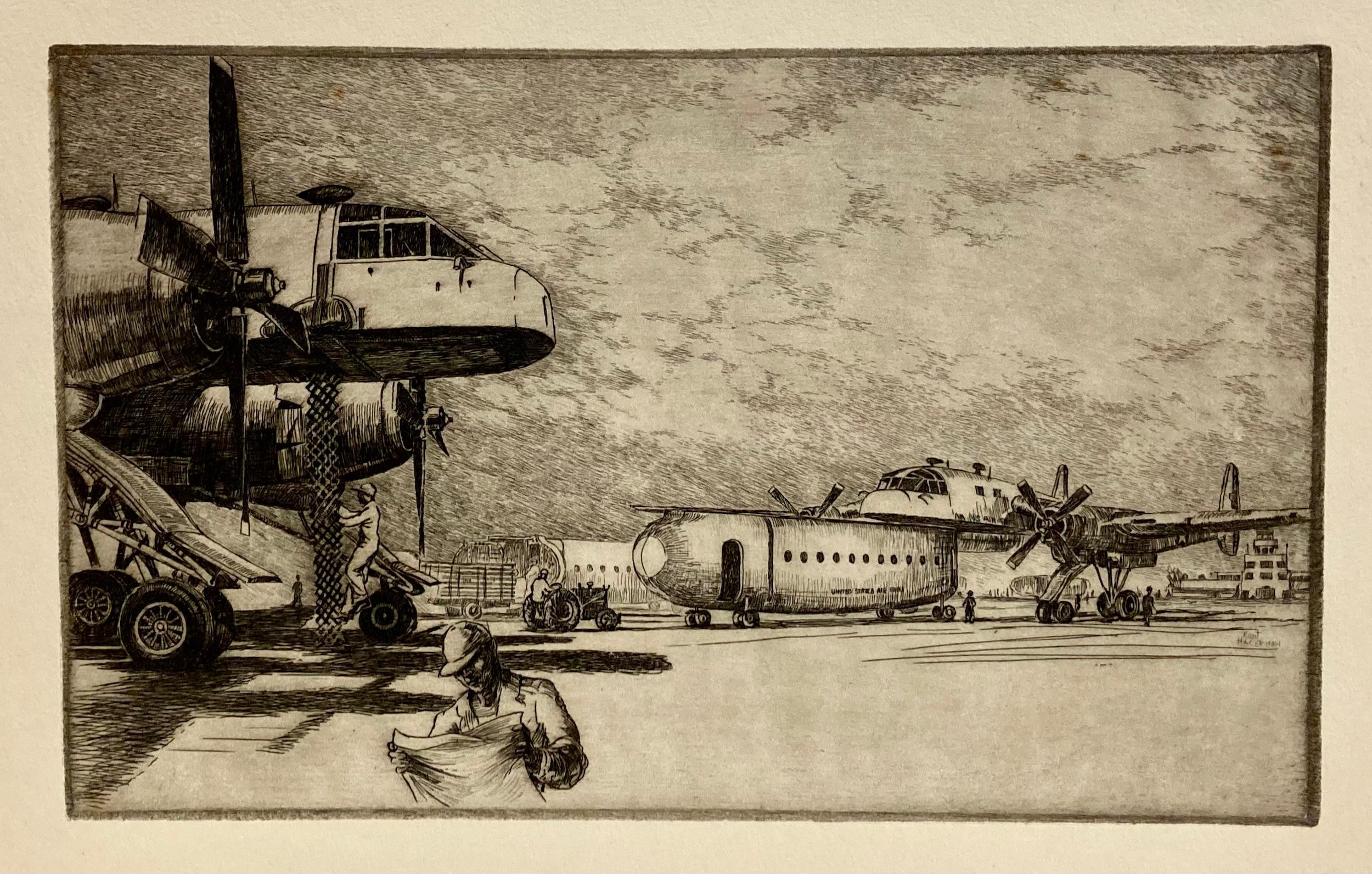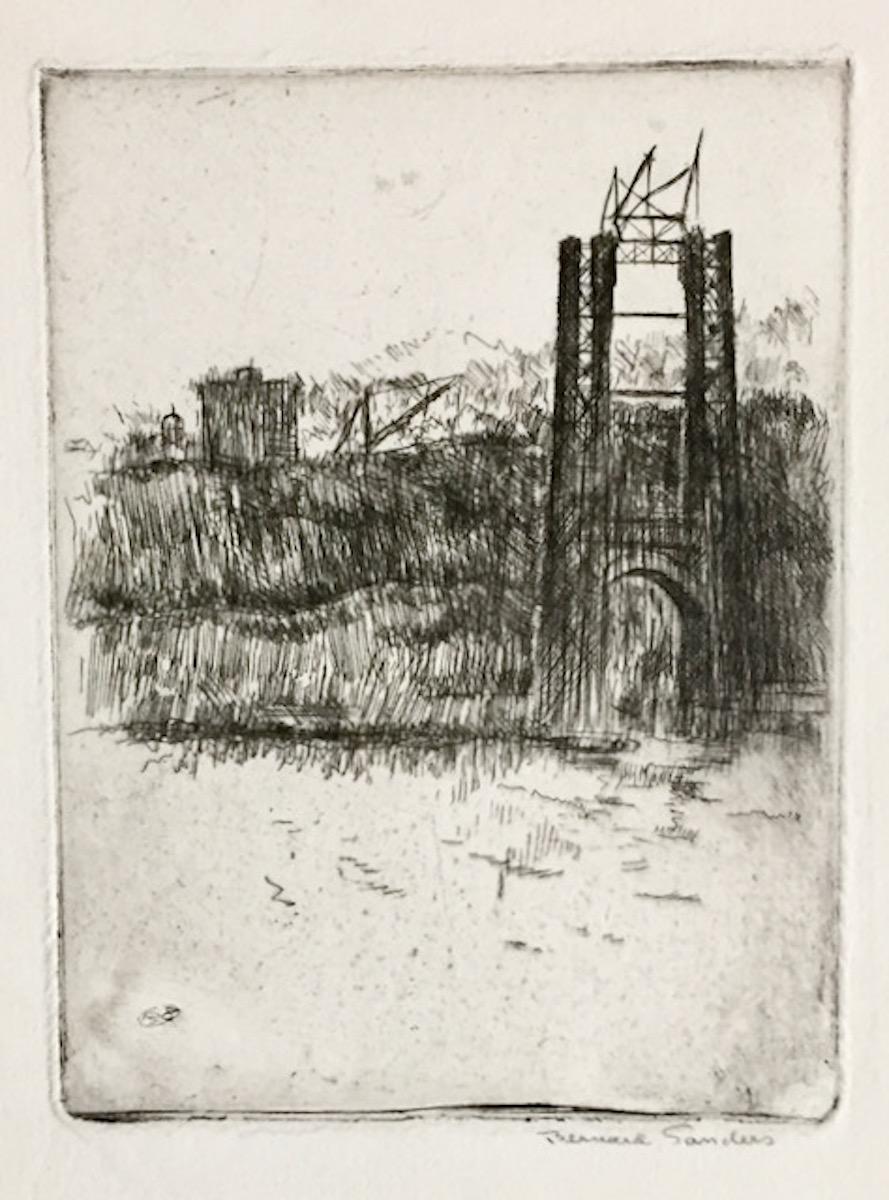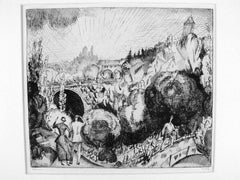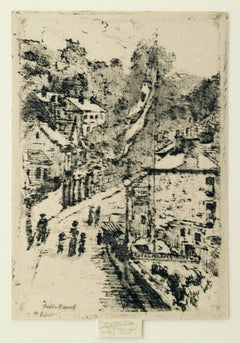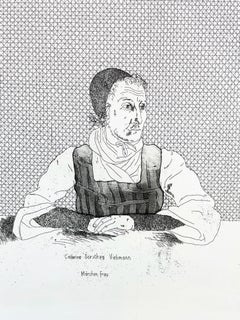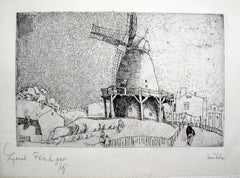
Old Mill
View Similar Items
Want more images or videos?
Request additional images or videos from the seller
1 of 2
Lyonel FeiningerOld Mill1911-12
1911-12
About the Item
- Creator:Lyonel Feininger (1871-1956, American)
- Creation Year:1911-12
- Dimensions:Height: 5.38 in (13.67 cm)Width: 8.38 in (21.29 cm)
- Medium:
- Movement & Style:
- Period:
- Condition:
- Gallery Location:New York, NY
- Reference Number:1stDibs: LU51531466813
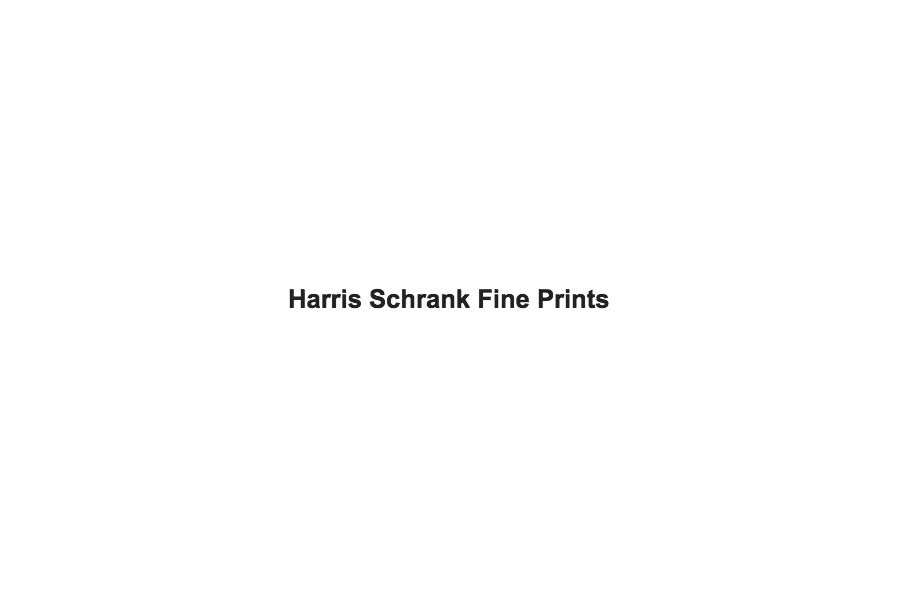
About the Seller
4.9
Recognized Seller
These prestigious sellers are industry leaders and represent the highest echelon for item quality and design.
Established in 2000
1stDibs seller since 2016
99 sales on 1stDibs
Typical response time: 3 hours
Associations
International Fine Print Dealers Association
More From This SellerView All
- House in the WoodsBy Jean-Emile LaboureurLocated in New York, NYJean-Emile Laboureur (1877-1943), Le Chemin de la Foret, etching and engraving, 1926, signed in pencil lower left and inscribed epreuve d’artiste lower right. Reference: Laboureur 32...Category
1920s Modern Landscape Prints
MaterialsEngraving, Etching
- Paysage au Buttes-Chaumont (2nd Planche), 1920-21By Jean-Emile LaboureurLocated in New York, NYJean-Emile Laboureur (1877-1943) etching and engraving Paysage au Buttes-Chaumont (2nd Planche), 1920-21, signed and numbered ( 38/55) in pencil. Reference: Sylvain Laboureur 205. In very good condition with wide margins (remains of old hinging on margin verso, some showing through not near image). On white wove paper, 7 7/8 x 9 1/4, the sheet 10 x 13 1/2 inches, archival matting. A fine, fresh and clear impression of this important cubist-influenced scene. Jean-Emile Laboureur was born in Nantes in 1877. He traveled to Paris in 1895 intending to study law at the Sorbonne, but found himself drawn to the nearby famed Academie Julian, and although he never officially matriculated there, he became immersed in the Parisian art scene. Laboureur then traveled widely, staying for periods in the US and London, and studying classic art and printmaking in Italy and Germany. Although he had moved back to Paris by 1910, a time when analytical cubism was emerging in the work of Picasso and Braque, he continued working in an abstract, modernist mode, waiting until about 1913 or shortly thereafter to invent a cubist idiom all his own. Cubism remained an important theme for Laboureur, a theme he varied, sometimes using it as a strong design or compositional component, sometimes only as a subtle background element. In Paysage aux Buttes...Category
1920s Cubist Landscape Prints
MaterialsEngraving, Etching
- A Street in Ventnor, Isle of WightBy Theodore Casimir RousselLocated in New York, NYTheodore Roussel (1847-1926), A Street in Ventnor, Isle of Wight, etching, soft ground etching, drypoint, 1912, signed in pencil on the tab and inscribed...Category
1910s Impressionist Landscape Prints
MaterialsDrypoint, Etching
- The Street, Chelsea EmbankmentBy Theodore Casimir RousselLocated in New York, NYTheodore Roussel (1847-1926), The Street, Chelsea Embankment, etching, 1888-9, signed in pencil on the tab and annotated “imp” [also signed lower left in the plate]. Reference: Hausb...Category
1880s Impressionist Landscape Prints
MaterialsEtching
- Soaring New YorkBy Howard Norton CookLocated in New York, NYHoward Cook (1901-1980), Soaring New York, aquatint, soft0ground etching, roulette, 1931-2; signed, dated and annotated “imp” in pencil lower right, titled lower margin. Reference: D...Category
1930s American Realist Landscape Prints
MaterialsEtching
- The Bridge, Santa MariaBy James Abbott McNeill WhistlerLocated in New York, NYJames Whistler (1834-1903), The Bridge, Santa Marta, 1879-80, etching with drypoint, printed in sepia on fine laid paper. Signed with the butterfly and inscribed imp on the tab (also with an exceedingly light butterfly lower right in the plate). Kennedy 204, probably eighth (final) state; Glasgow 201, probably state 9 (of 9) (cf. Margaret F. MacDonald, Grischka Petri, Meg Hausberg, and Joanna Meacock, James McNeill Whistler: The Etchings, a catalogue raisonné, University of Glasgow, 2011), Lochnan 199. Trimmed to the platemark by the artist, h: 11.8 x w: 7.9 in / h: 30 x w: 20.1 cm. A fine impression, printed with subtle tone. The bridge theme occurs repeatedly in Whistler’s vistas. It is also the main focus of more than one of the Venetian prints. While some bridges are seen from below, from where one would see it if approaching in a gondola (for example Ponte del Piovan, Kennedy 209), The Bridge depicts the scene from a high perspective, opening up the view into the far distance. The small boat approaching the arch in the foreground is again, as in the earlier Thames prints, a stock motif that is probably ultimately derived from the Japanese woodcuts of Hokusai and Hiroshige. The bridge here is the Ponte de le Terese over the Rio de l’Arzere in the Santa Marta quarter. The early biography of Whistler by Elizabeth and Joseph Pennell is essential for its “immense quantity of information” but also notorious for “the inherent hyperbole and misinformation” (Eric Denker, Annotated Bibliography, in Fine, p. 184). Still, it is worth quoting from the Pennels’ appraisal of The Bridge: “Simplicity of expression has never been carried further. Probably the finest plate, in its simplicity and directness, is The Bridge. Whistler now obtained the quality of richness by suggesting detail, and also by printing. In The Traghetto...Category
1870s Impressionist Landscape Prints
MaterialsDrypoint, Etching
You May Also Like
- The Haunted Castle (Six Fairy Tales from the Brothers Grimm) David HockneyBy David HockneyLocated in New York, NYThe Haunted Castle (from Six Fairy Tales from the Brothers Grimm) Etching and aquatint on W S Hodgkinson paper watermarked "DH" and "PP" Paper 17.5 x 12.25 in. / 45 x 31 cm Plate 14 ...Category
1960s Modern Figurative Prints
MaterialsEtching
- Catherina Dorothea Viehman (Six Fairy Tales from the Brothers Grimm) HockneyBy David HockneyLocated in New York, NYCatherina Dorothea Viehman (from Six Fairy Tales from the Brothers Grimm) Etching and aquatint on W S Hodgkinson paper watermarked "DH" and "PP" Paper 1...Category
1960s Modern Figurative Prints
MaterialsAquatint, Etching
- Rapunzel, Rapunzel let down your Hair (Six Fairy Tales from the Brothers Grimm)By David HockneyLocated in New York, NYSheet from “Rapunzel” story (from Six Fairy Tales from the Brothers Grimm) Text printed letterpress and “Rapunzel, Rapunzel let down your Hair” etching and aquatint on W S Hodgkinson paper watermarked "DH" and "PP" Etching 10.5 × 9.85 in. / 26.7 × 25 cm Paper 17.5 x 12.25 in. / 45 x 31 cm Unsigned: apart from the published edition of 400 books and 100 portfolios. This is one of eleven images recently found in our archive which we have decided to make available. There is one only of each image. Perhaps the most famous story from the Grimm Brothers, Rapunzel spins the tale of a beautiful young princess locked away by an evil sorceress. Captured in this scene is the moment a King's son came across the tower and fell in love with her sweet singing, beseeching her: 'Rapunzel, Rapunzel, Let down your hair to me.' Though the sorcerer banishes Rapunzel and maims the prince, they are of course ultimately reunited to live happily together. Hockney illustrates this scene with incredible texture detail: layers of aquatint defining the soft forest floor, delicate hatching on the horse's haunch, the tower's tight crosshatching, and of course the lyrical gesture of Rapunzel's hair which cascades from the upper right corner. This print from our publisher's archives is one of thirty-nine etchings from David Hockney’s 1969 "Six Fairy Tales from the Brothers Grimm". Hockney worked on this series with Paul Cornwall-Jones at Petersburg Press over the course of a year. 400 books and 100 portfolios plus artist’s proofs were printed. The artist illustrated six stories: 'The Little Sea Hare', 'Fundevogel', 'Rapunzel', 'The Boy who left Home to learn Fear', 'Old Rinkrank' and 'Rumpelstilzchen'. According to Hockney, "They're fascinating, the little stories, told in a very, very simple, direct, straightforward language and style, it was this simplicity that attracted me. They cover quite a strange range of experience, from the magical to the moral." He was inspired by earlier illustrators of the tales, including Arthur Rackham and Edmund Dulac, but Hockney reimagined the stories for a modern audience. The frontispiece for the project pictures Catherina Dorothea Viehmann, the elderly German woman who recounted fairy tales to the Grimm brothers when they were in their late twenties. In Hockney's words: “The stories weren’t written by the Brothers Grimm…they came across this woman called Catherina Dorothea Viehmann, who told 20 stories to them in this simple language, and they were so moved by them that they wrote them down word for word as she spoke.” Hockney drew the German woman in the style of Dürer, formally posed yet naturalistic against an impeccably crosshatched swath of grey. Hockney wrote about the surreal plots contained in the Brothers Grimm tales: “…the stories really are quite mad, when you think of it, and quite strange. In modern times, it’s like the story of a couple moving into a house, and in the next door’s garden they see this lettuce growing: and the wife develops this craving for the lettuce that she just must have and climbs over to pinch it, and the old woman who lives in the house next door says well, you can have the lettuce if you give me your child, and they agree to it. And if you put it into terms like this and imagine them in their semi-detached house agreeing to it all, it seems incredible.” Hockney enhanced this unbelievable quality with his illustrations which traverse inky, dense areas of intense crosshatching and minimalist line work. Rather than serving as direct interpretations of the plot, the images capture moments and feelings. Some portray the magic yet mundane -- Rapunzel's tiny face gazing placidly at a well-tended garden, or project danger and unease as in The Haunted Castle, with its citadel perched atop craggy rocks, dramatically lit against a dark sky. Hockney's sense of humor comes through in Cold Water About to Hit the Prince, in which a man tucked into bed stares straight at a rush of water drawn with a splash (this technique is likely Spit Bite, and the resultant bold spattered brushstroke contrasts beautifully with the rest of the carefully crosshatched image). A Wooded Landscape, with its lush textures, conveys the bucolic setting of a fairy tale and the potential danger hidden within the woods -- the viewer is left to wonder who lives on the hilltop in that diminutive cabin. These etchings defy the conventions of beautiful fairy tale illustrations...Category
1960s Modern Landscape Prints
MaterialsEtching, Aquatint
- Paul Klee, Garten Der Leidenschaft (Garden of Passion)By Paul KleeLocated in New York, NYKornfeld 56. 50 published with the book Expressionismus Die Kunstwende, 1918, in addition to 54 earlier impressions. Signed and titled in pencil in bottom margin under image.Category
1910s Modern Abstract Prints
MaterialsEtching
- Irving Guyer, Christmas Trees on Second Street (NYC)By Irving GuyerLocated in New York, NYPhiladelphia-born Irving Guyer attended the Art Students League and worked in New York City before moving to California. This print is signed and titled i...Category
1930s American Modern Figurative Prints
MaterialsDrypoint, Etching
- Bernard Sanders, Boy in the woodsLocated in New York, NYThere's so often a mysterious or evocative atmosphere that permeates Sander's work. Signed in pencil; titled in lower margin in pencil.Category
Early 20th Century American Modern Landscape Prints
MaterialsEtching
